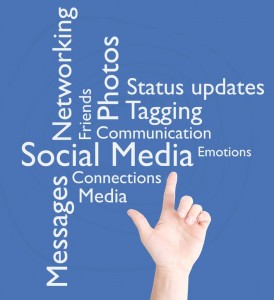Http://LeonardSipes.Com and Http://MyLifeAudio.Com
Facebook Page at http://www.facebook.com/LeonardSipes
We know who is using social media:
“The proportion of internet users aged 18-29 who reported using social networking sites dropped to 83% in December 2012, according to results from a study by the Pew Research Center’s Internet & American Life Project. That represents a 10% decline from just 4 months earlier, and is the lowest proportion in roughly 2 years. Overall, after rising steadily for several years, the percentage of internet users who reported using social networking sites dropped for the first time between August and December 2012, down from 69% to 67%.
Meanwhile, the only group of internet users to see increased adoption of social networking sites during the August-to-December time period was the 30-49 crowd, up from 73% adoption in August to 77% in December. That means that the gap in adoption between it and the 18-29 set narrowed from 19% points in August 2012 to just 6% points in December.
As with the youngest group, there was a decline in the percentage of 50-64-year-olds (57% to 52%) and those 65 and over (38% vs. 32%) using social networking sites.”
Note that additional data based on race, sex and background are included.
We know that social media is probably better at brand awareness than driving revenue:
“Social media marketing: got to do it, but is it really a revenue driver? That appears to be the perception, at least according to survey results [download page] from a newly-released Nectar Online Media study.
Respondents were nearly universal in their belief that social media is important to their organization (94%) and that it enhances awareness of their brand (92%). 8 in 10 also checked social off as a strategic imperative – mirroring results from a Facebook study last year in which 6 in 10 senior marketers said social was key to their company’s survival.
But amidst all the importance assigned to social media marketing, the Nectar Online Media survey respondents (the majority of whom have responsibility for or influence over their organization’s social media marketing) were less enthusiastic about its ability to drive revenue, or even their ability to perform social media marketing successfully.
Only 46% agreed or strongly agreed that social media drives revenue for their organization, and just 28% said their program was “best-in-class.”
We know that social is probably best at reaching high quality users:
“Social vastly outperforms portals, networks, and exchanges in ad reach efficiency – a measure that refers to their ability to reach exclusive users at the lowest cost –finds a study [download page] from Aggregate Knowledge.
Ads on social were also well above the average in their ability to consistently reach high-quality users. Aggregate Knowledge describes its “user quality index” as measuring “a channel’s ability to reach a user that can be marketed to consistently.” Social performed almost twice as well as the average in this regard, with portals (index of 108) also above-average.”
We know that people use social media and the internet to research companies:
“56% of Americans agree that now more than ever, they’re pro-actively trying to learn more about the companies they hear about or do business with, according to [pdf] results from latest Harris Poll Reputation Quotient (RQ) study. Harris Interactive calls these consumers “seekers,” and contrasts them with “bystanders,” who are not as active in seeking out information. This year, 56% of respondents were classified as “seekers,” up from 50% last year.”
So all this means:
We know that close to 70 percent of internet users are engaging social media platforms thus we feel compelled to engage them back through content creation.
Although the research cited pertains to business, I feel the lessons are transferable to all organizations.
There are doubts that social media prompts people to take desired actions. Yes, the platform is necessary for raising awareness, but additional research on marketing states that two-thirds of advertising still goes to traditional sources (television, radio and newspapers) thus reinforcing the belief that social is not a bedrock method of obtaining purchase decisions.
We know that more people use the internet and social media to research everyone “and” there are high quality users who are important to your business or cause.
It’s been my experience that the “quality web” is the heart and soul of social media. These are users who are important to your bottom line. They pay attention and give time to digest what you create. This concept reinforces the old business adage that 20 percent of your customers are responsible for 80 percent of your sales.
Thus social media may be a game of massive numbers “but” it’s that 10 to 20 percent who propel your business or cause to success.
Best, Len.
If you like this article, please comment, share or follow.
